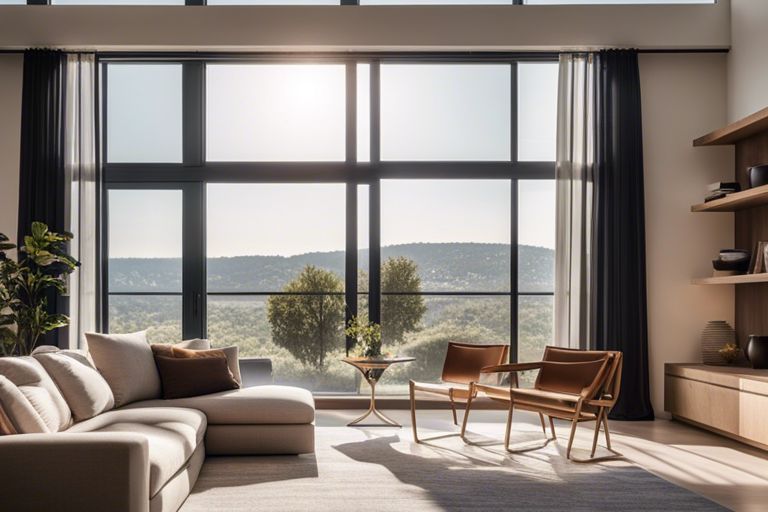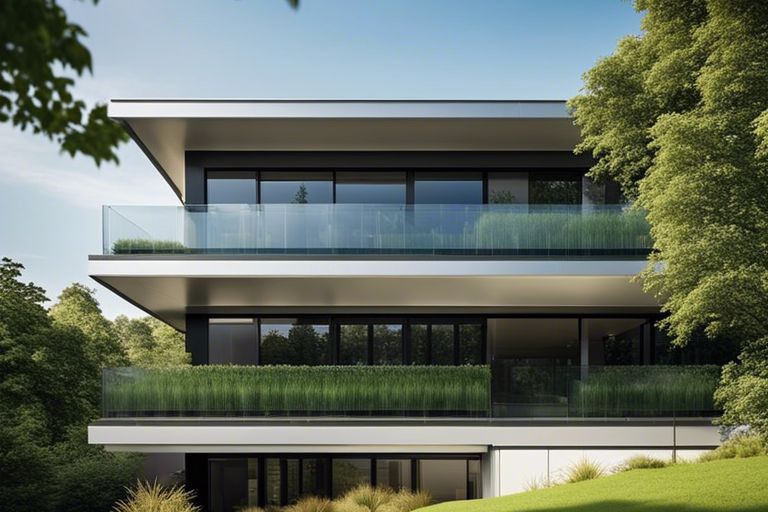In the realm of roofing solutions, flat rooflights have gained popularity for their sleek design and ability to flood spaces with natural light. However, when considering installing rooflights, one crucial aspect to assess is their weather resistance and durability. These factors are paramount in ensuring the longevity and functionality of your rooflights, especially in the face of harsh weather conditions such as heavy rain, snow, and strong winds. A high-quality flat rooflight that can withstand these elements will not only provide a bright and airy space but also offer peace of mind knowing that your rooflights are built to last. It is imperative to choose rooflights with robust construction and weather-resistant materials to guarantee their performance and longevity.
Key Takeaways:
- Weather Resistance: Flat rooflights are designed to withstand harsh weather conditions, providing excellent protection against rain, wind, and snow.
- Durability: High-quality materials such as toughened glass and aluminium frames ensure the longevity of flat rooflights, making them a durable choice for any building.
- Low maintenance: Flat rooflights require minimal maintenance, as they are built to resist rust, corrosion, and discolouration, saving time and money in the long run.
Fundamentals of Weather Resistance
When it comes to flat rooflights, one of the crucial aspects to consider is their weather resistance. Weather resistance refers to the ability of a rooflight to withstand the harsh outdoor elements, including rain, wind, snow, and UV exposure, without compromising its performance or durability.
Material Considerations
Choosing the right materials is paramount in ensuring the weather resistance of flat rooflights. Glass rooflights are a popular choice due to their durability and resistance to discolouration. Polycarbonate rooflights are lightweight and impact-resistant, making them ideal for areas prone to extreme weather conditions. Both materials offer excellent UV protection, ensuring longevity and maintaining clarity over time.
Design Features for Improved Durability
Flat rooflights with double or triple glazing provide enhanced insulation and structural integrity, improving their weather resistance and energy efficiency. Powder-coated aluminium frames offer excellent durability and corrosion resistance, making them suitable for coastal or industrial environments where exposure to salt or pollutants is a concern.
In addition to high-quality materials, incorporating watertight seals and robust hinges into the design of flat rooflights can further enhance their weather resistance and overall longevity. Comprehensive testing for water ingress and structural performance under various weather conditions is essential to ensure that the rooflights meet the required standards for durability.
Technological Advancements in Rooflights
As technology continues to evolve, so do the advancements in rooflight design and construction. The integration of cutting-edge materials and techniques has significantly improved the weather resistance and durability of modern flat rooflights.
Innovations in Sealants and Coatings
Recent innovations in sealants and coatings have revolutionised the performance of rooflights. Advanced sealants create a watertight barrier, preventing any leaks or water ingress. Specialised coatings enhance UV resistance, preventing discolouration and maintaining the clarity of the rooflight over time. These advancements not only improve the longevity of rooflights but also reduce maintenance requirements, making them more cost-effective in the long run.
The introduction of self-cleaning coatings has further enhanced the benefits of rooflights. These coatings utilise technology that reacts with daylight to break down organic dirt and grime, allowing the rain to wash it away. This self-cleaning feature not only ensures a clearer view through the rooflight but also reduces the need for manual cleaning, especially in hard-to-reach areas, prolonging the life of the rooflight.
Impact of Glazing Technologies on Longevity
The glazing technologies used in modern rooflights play a crucial role in determining their longevity. Multi-layered glazing systems with low-emissivity coatings provide better insulation properties, improving energy efficiency and reducing heat loss. Enhanced glass compositions increase impact resistance, protecting the rooflight from potential damage due to external elements such as hail or debris.
Furthermore, the use of toughened or laminated glass enhances the structural integrity of rooflights, making them more resistant to extreme weather conditions. These advancements not only ensure the longevity of the rooflight but also enhance the safety and security of the building, providing peace of mind to the users.

Maintenance and Care for Flat Rooflights
When it comes to ensuring the longevity and performance of flat rooflights, regular maintenance and care are key factors. By following a proper maintenance schedule and implementing best practices for cleaning and repair, you can enhance the weather resistance and durability of your rooflights, ultimately prolonging their lifespan.
Routine Inspection Schedule
It is essential to establish a routine inspection schedule for your flat rooflights to detect any signs of wear and tear early on. Inspections should be conducted at least twice a year, preferably before and after the harsher seasons. During these inspections, check for any cracks, leaks, or damage to the rooflights and their surrounding areas. Addressing any issues promptly can prevent further damage and ensure the optimal functioning of the rooflights.
Moreover, keeping a record of inspection dates and any maintenance work carried out can help track the performance of the rooflights over time. This documentation can also be beneficial for warranty claims or in case professional assistance is needed for repairs.
Cleaning and Repair Best Practices
When it comes to cleaning flat rooflights, use mild soap and water solutions to avoid damaging the materials. Abrasive cleaners or tools should be avoided as they can cause scratches or weaken the rooflights’ weather resistance properties. Regular cleaning not only improves the appearance of the rooflights but also prevents dirt build-up that can affect their performance.
For repairs, it is crucial to address any issues promptly and professionally. Small cracks or leaks should be sealed using appropriate sealants, while larger repairs may require professional assistance. Ignoring repairs can lead to water ingress, mould growth, and structural damage, compromising the integrity of the rooflights and potentially causing safety hazards.
Remember that regular maintenance, careful cleaning, and timely repairs are essential for ensuring the weather resistance and durability of flat rooflights. By following these best practices, you can enjoy the benefits of natural light and energy efficiency while prolonging the lifespan of your rooflights.

Regulatory Standards and Compliance
When it comes to the weather resistance and durability of flat rooflights, adherence to regulatory standards is essential. Meeting building codes and compliance requirements ensures that rooflights are constructed and installed to withstand various weather conditions and maintain their structural integrity over time.
Building Codes and Weather Resistance Requirements
In the United Kingdom, building regulations dictate the minimum standards for construction to ensure buildings are safe and sustainable. Flat rooflights must meet specific weather resistance requirements to prevent water ingress, heat loss, and damage from extreme weather events. These regulations are in place to protect the property and its occupants from potential hazards that could arise from substandard rooflight installations.
It is crucial for architects, builders, and manufacturers to adhere to building codes and ensure that rooflights are tested and certified to meet the necessary standards. Failure to comply with these regulations can result in fines, legal liabilities, and even potential safety hazards for building occupants.
Certification Processes for Rooflight Durability
For rooflights to be considered durable and weather-resistant, they must undergo certification processes by accredited bodies. These certifications involve rigorous testing to assess the performance of rooflights under different conditions, including exposure to UV radiation, temperature changes, and wind forces. Certified rooflights provide assurance of quality and reliability in withstanding the challenges posed by the environment.
One of the most recognised certification bodies for rooflights is the British Board of Agrément (BBA), which evaluates products based on their performance, quality, and durability. Choosing BBA-certified rooflights gives confidence to buyers and specifiers that the products have been thoroughly assessed and meet the required standards for weather resistance and durability.

Weather Resistance and Durability of Flat Rooflights
In the long run, flat rooflights have proven to be highly weather-resistant and durable solutions for modern buildings. Their design and materials ensure they can withstand various weather conditions, such as heavy rain, snow, and intense sunlight, without compromising their structural integrity. This makes flat rooflights a reliable choice for providing natural light and ventilation while offering long-term performance and protection against the elements. Property owners seeking a sustainable and robust roofing solution should consider flat rooflights for their buildings to enjoy both aesthetic appeal and practical benefits.
FAQ
Q: What factors contribute to the weather resistance of flat rooflights?
A: The weather resistance of flat rooflights is influenced by the quality of materials used, such as toughened glass and durable frames, as well as the effectiveness of the installation process in ensuring a watertight seal.
Q: How can the durability of flat rooflights be maximised?
A: To maximise the durability of flat rooflights, regular maintenance, such as cleaning the glass surface and checking for any signs of wear and tear, is essential. Additionally, using high-quality materials and professional installation can significantly extend the lifespan of flat rooflights.
Q: Are there any specific features to look for in weather-resistant flat rooflights?
A: When choosing weather-resistant flat rooflights, look for features such as UV protection, thermal insulation, and wind resistance to ensure longevity and performance in various weather conditions. It is also advisable to opt for products that come with a warranty for added peace of mind.






